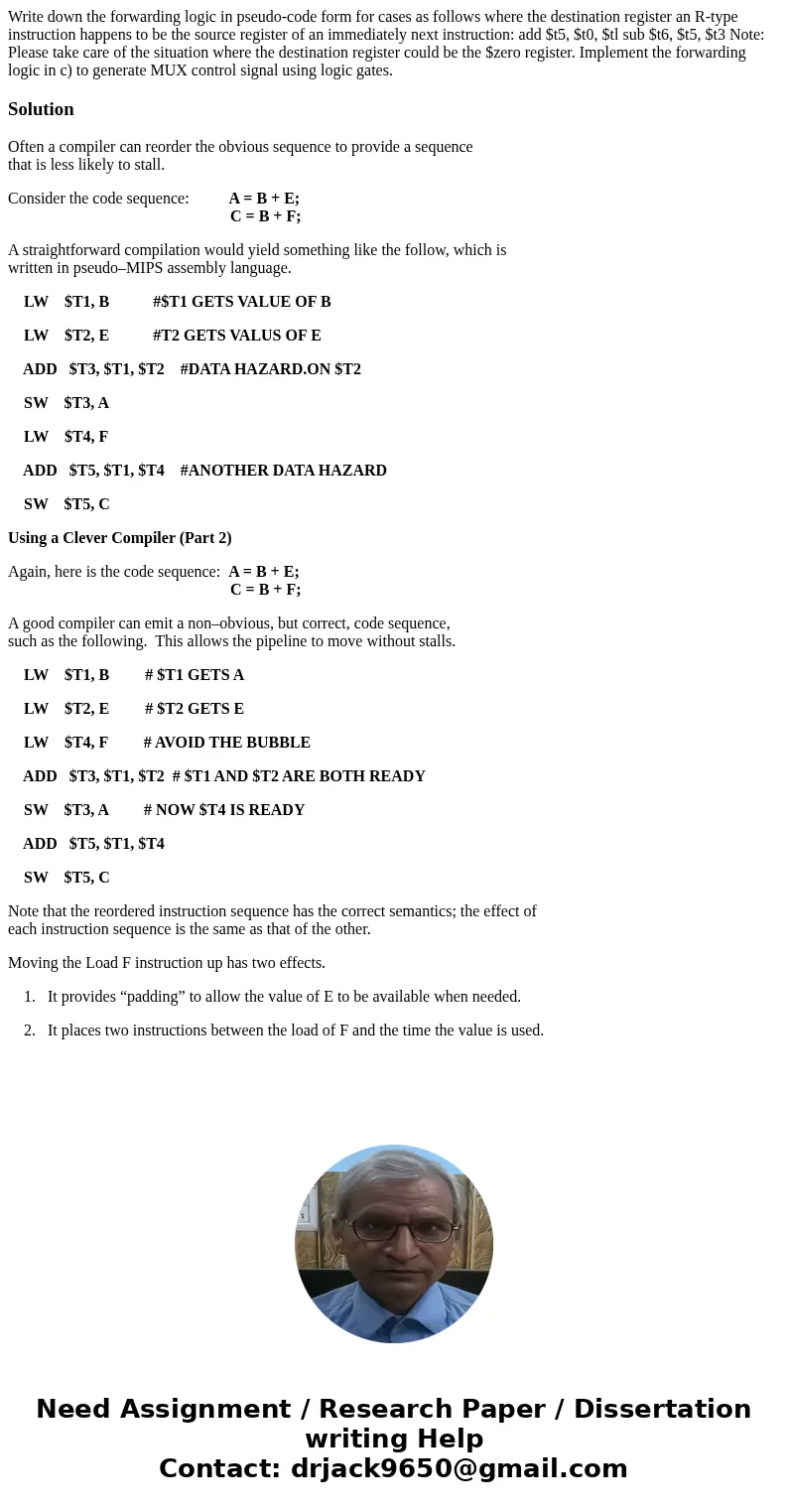Write down the forwarding logic in pseudocode form for cases
Solution
Often a compiler can reorder the obvious sequence to provide a sequence
that is less likely to stall.
Consider the code sequence: A = B + E;
C = B + F;
A straightforward compilation would yield something like the follow, which is
written in pseudo–MIPS assembly language.
LW $T1, B #$T1 GETS VALUE OF B
LW $T2, E #T2 GETS VALUS OF E
ADD $T3, $T1, $T2 #DATA HAZARD.ON $T2
SW $T3, A
LW $T4, F
ADD $T5, $T1, $T4 #ANOTHER DATA HAZARD
SW $T5, C
Using a Clever Compiler (Part 2)
Again, here is the code sequence: A = B + E;
C = B + F;
A good compiler can emit a non–obvious, but correct, code sequence,
such as the following. This allows the pipeline to move without stalls.
LW $T1, B # $T1 GETS A
LW $T2, E # $T2 GETS E
LW $T4, F # AVOID THE BUBBLE
ADD $T3, $T1, $T2 # $T1 AND $T2 ARE BOTH READY
SW $T3, A # NOW $T4 IS READY
ADD $T5, $T1, $T4
SW $T5, C
Note that the reordered instruction sequence has the correct semantics; the effect of
each instruction sequence is the same as that of the other.
Moving the Load F instruction up has two effects.
1. It provides “padding” to allow the value of E to be available when needed.
2. It places two instructions between the load of F and the time the value is used.

 Homework Sourse
Homework Sourse